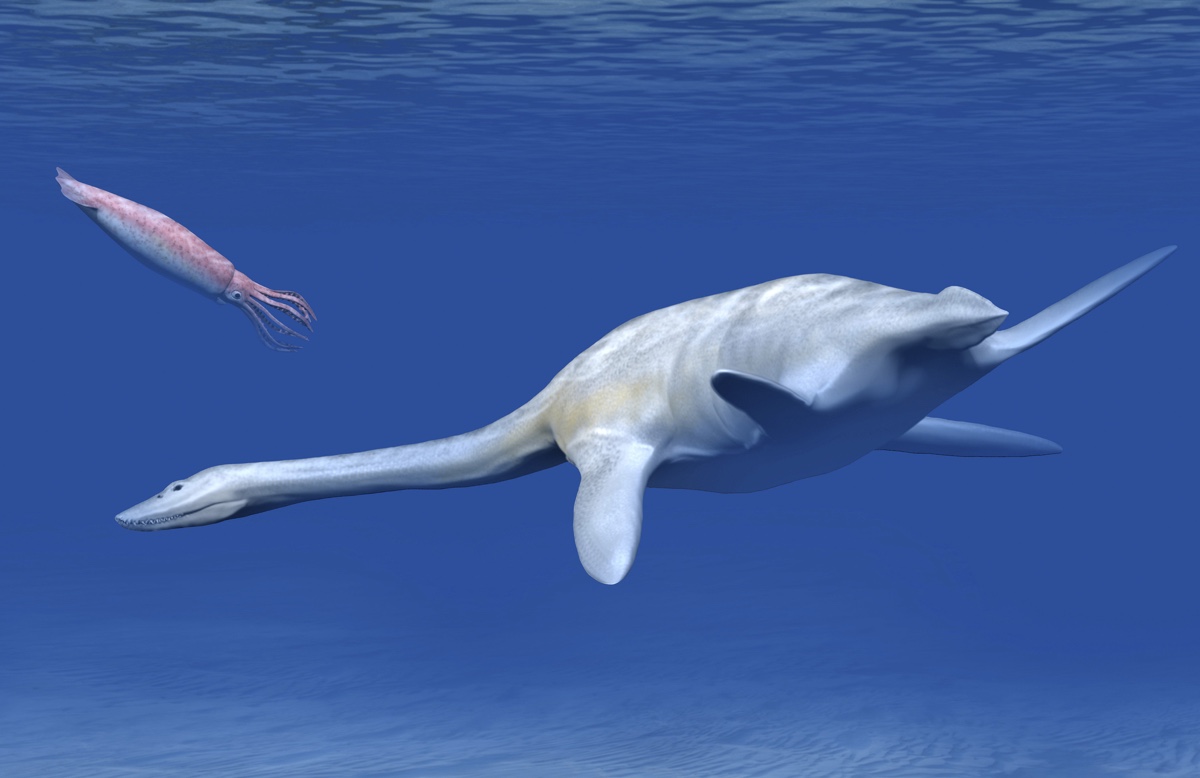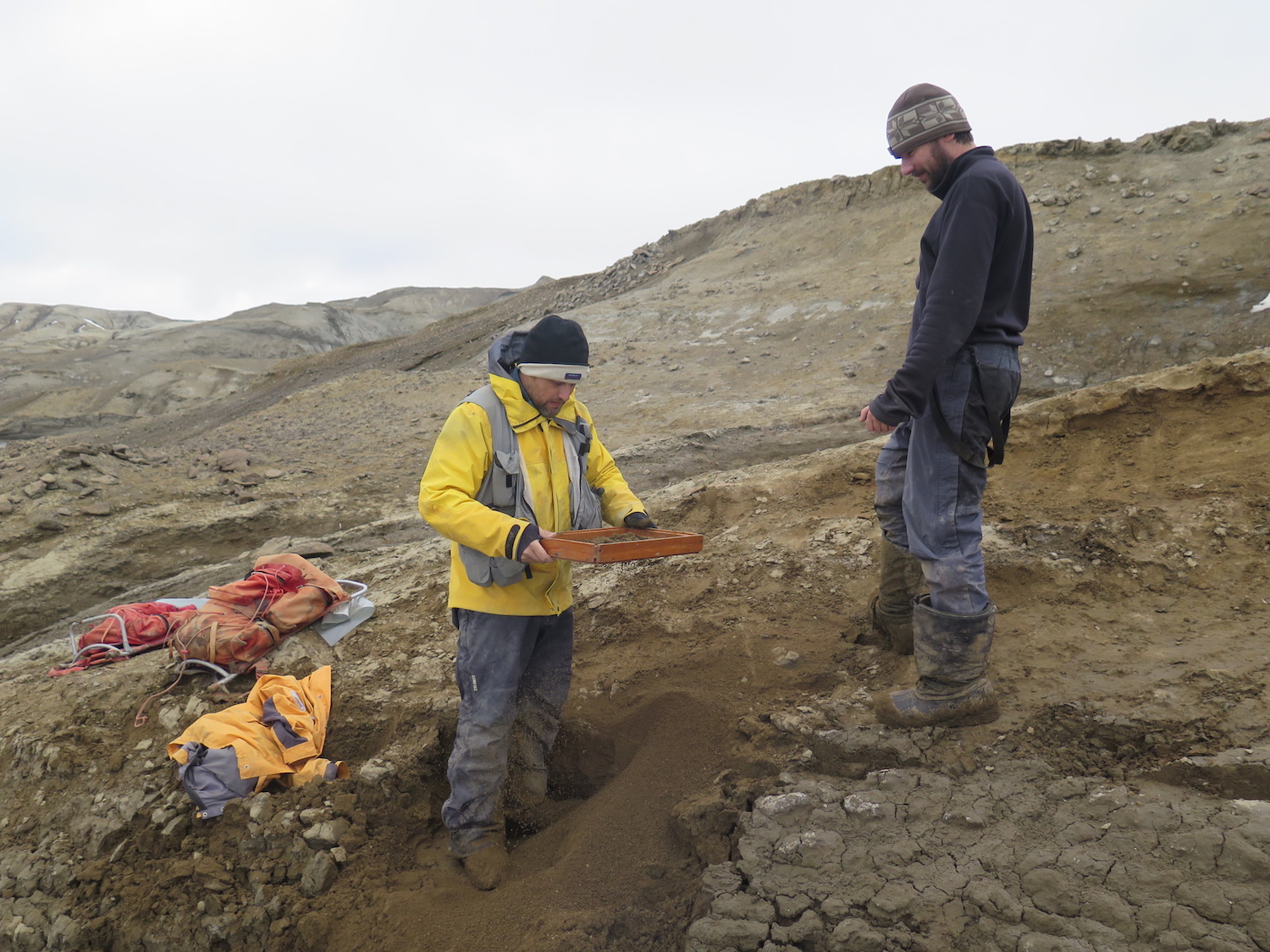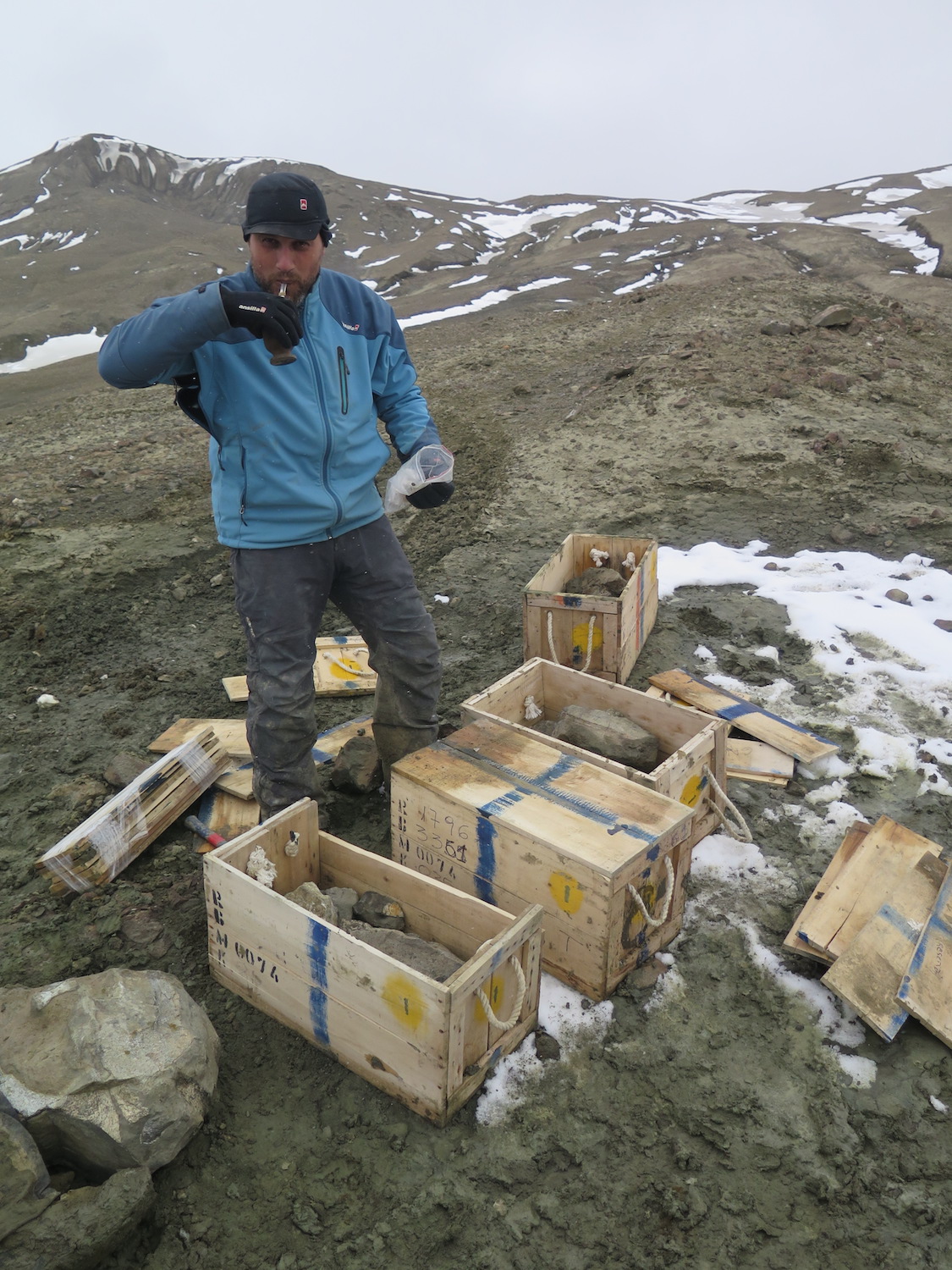Ancient 'Loch Ness Monster' from Antarctica Breaks a Record for Body Size

Paleontologists have discovered the remains of an ancient Loch Ness Monster look-alike in freezing Antarctica. And just like the legendary Nessie, it wasn't the runt of the litter.
The prehistoric plesiosaur — a four-flippered marine reptile that lived during the dinosaur age — measured a colossal 36 feet (11 meters) long from snout to tail, about as long as a modern telephone pole. This newfound "sea monster" is now the largest known elasmosaurid (a type of plesiosaur with a long neck) on record.
"Not only is it quite long, it's also quite stocky" and weighed nearly 15 tons (13.4 metric tons) when it was alive, making it the heaviest known elasmosaurid, said study lead researcher José O'Gorman, a vertebrate paleontologist at the La Plata Museum and the National University of La Plata in Argentina. [Photos: Uncovering One of the Largest Plesiosaurs on Record]
Researchers discovered the fossils of the enormous plesiosaur on Antarctia's Seymour Island (known as "Marambio" in Argentina) in 1989. But the beast was so large and the rock was so hard that it took three return trips — in 2005, 2012 and 2017 — to fully extricate the specimen. During that time, the scientists collected 1,760 lbs. (800 kilograms) of fossilized bones embedded in rock.

On the island, the fossils lay hidden in the López de Bertodano Formation, just 7.5 feet (2.3 meters) below the K/Pg boundary, the geologic line showing the Cretaceous–Paleogene extinction. This notorious extinction led to the demise of the nonavian dinosaurs and plesiosaurs, when a 6-mile-long (10 kilometers) asteroid collided with Earth about 66 million years ago.
Given the fossils' proximity to the K/Pg boundary, this ancient sea monster likely lived 30,000 years before that mass extinction, O'Gorman told Live Science.

This particular plesiosaur likely falls within the genus Aristonectes, but the scientists aren't sure if it's a new species, said O'Gorman, who is also part of National Scientific and Technical Research Council of Argentina (CONICET). That's because the newfound fossils don't overlap enough with those of other specimens, making comparisons difficult, he said.
Sign up for the Live Science daily newsletter now
Get the world’s most fascinating discoveries delivered straight to your inbox.
In other words, the nickname Nessie might be most appropriate, given the creature's striking resemblance.
That said, Aristonectes' remains do shed light on its life. Parts of its vertebrae were fused together, indicating that the creature was a fully grown adult, the researchers found. And although this Aristonectes was a huge beast, its neck wasn't as elongated as those of other elasmosaurids, because it literally had fewer neck vertebrae. That's why researchers call it "stocky," O'Gorman noted.
Even its location fits in with the track record of its relatives, as other late Cretaceous elasmosaurid fossils have been found in the southern portion of the world, including Patagonia (a region in southern Argentina and Chile), western Antarctica and New Zealand, the researchers said.
This newfound Aristonectes likely dined on invertebrates, that is, animals without backbones, such as jellyfish. This specimen's huge size indicates that its ecosystem was flourishing and likely replete with tasty prey, O'Gorman said. Such plentiful conditions may have lasted until the mass extinction, he added.
The study, which was largely funded by Argentina's National Antarctic Directorate and the Argentine Antarctic Institute, will be published in the October issue of the journal Cretaceous Research.
- Image Gallery: Ancient Monsters of the Sea
- Image Gallery: 25 Amazing Ancient Beasts
- 15 of the Largest Animals of Their Kind on Earth
Originally published on Live Science.

Laura is the archaeology and Life's Little Mysteries editor at Live Science. She also reports on general science, including paleontology. Her work has appeared in The New York Times, Scholastic, Popular Science and Spectrum, a site on autism research. She has won multiple awards from the Society of Professional Journalists and the Washington Newspaper Publishers Association for her reporting at a weekly newspaper near Seattle. Laura holds a bachelor's degree in English literature and psychology from Washington University in St. Louis and a master's degree in science writing from NYU.










